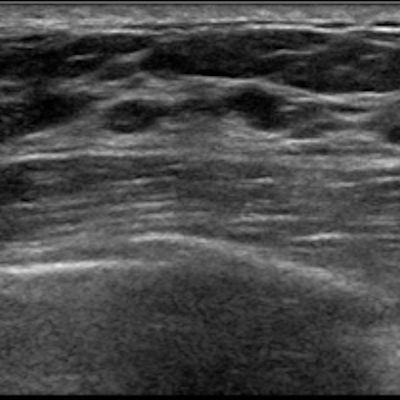
Are breast density notification laws really working to educate women? The laws may not be increasing women's knowledge about the health risks associated with having dense breasts, according to a new study published January 9 in the Journal of General Internal Medicine.
Only about one-quarter of women who were surveyed in the study knew that breast density was associated with an increased risk of breast cancer -- and that percentage didn't significantly change for women living in states with notification laws. The results suggest the wording of density notifications may not be clear enough.
"We know that women with less education are less likely to receive high-quality breast cancer screening and treatment," stated senior author Dr. Cary Gross, a professor at the Yale School of Medicine, in a press release. "Our study underscores one potential mechanism for this disparity. Ensuring that notifications are written in simple language may help improve understanding of breast density for all women."
Since 2009, 38 U.S. states and Washington, DC, have passed breast tissue density notification laws that require facilities to notify women if they have breast dense tissue. Dense breast tissue is associated with an increased risk of breast cancer and can make it harder for mammography to detect breast cancer.
However, results from the new study indicate that many women don't know these facts.
The researchers surveyed thousands of women with at least one mammogram and no personal history of breast cancer. Only 23% of the women were aware of the association between breast density and breast cancer risk. While women in states with density notification laws were more likely to report having dense breasts, they weren't any more likely to know about breast density's link with breast cancer.
In addition, 68% of all women knew that increased breast density could make it more difficult for mammography to detect cancer. That percentage increased to 85% for women in states with notification laws, but the difference was still not significant.
"The goal for these state laws is not being met," stated lead study author Dr. Kelly Kyanko, an assistant professor of medicine and population health at New York University. "Women who lived in states with [breast density notification] laws were not more likely to understand the implications of breast density."
Education also played a big role in whether women were aware of their breast density. Women with some college education or a bachelor's degree living in states with density notification laws on the books were more likely to report having dense breasts than their peers with similar education in nonnotification states. However, the difference was not significant for those with a high school education or less.
| Impact of education level on breast density awareness | |||
| Education level | No density law | Density law | p-value |
| Less than high school | 20.5% | 11% | 0.99 |
| High school diploma | 20.3% | 39.9% | 0.28 |
| Some college | 20.7% | 33.8% | 0.02 |
| Bachelor's degree | 28.9% | 43% | 0.03 |
"Previous work has shown that text of dense breast notifications are above women's average literacy level and have poor understandability, and women receiving notifications struggle to understand the meaning of breast density," the authors wrote. "Our results, along with these previous studies, raise concern that women of low education may benefit less from [dense breast notification] laws, and policies are needed to ensure that existing breast cancer disparities are not widened."
Indeed, the wording of density notification letters is certain to become a major issue as the U.S. Food and Drug Administration ponders how to create a national standard for density reporting as part of the Mammography Quality Standards Act.
Breast density notification advocate JoAnn Pushkin, the executive director of DenseBreast-info.org, believes more research needs to be conducted into the wording of state notification laws. For instance, some states don't mention whether the patient actually has dense breasts, while others don't mention the link between dense breast tissue and cancer.
 Differences in breast density notification laws. Image courtesy of JoAnn Pushkin.
Differences in breast density notification laws. Image courtesy of JoAnn Pushkin."To understand the effect of inform laws and whether they increase understanding of implications, a comparison of state laws that do provide full information ... compared to states with no inform law would be clarifying," Pushkin told AuntMinnie.com. "A single national reporting standard is needed to address these inconsistencies in state notification languages."



















